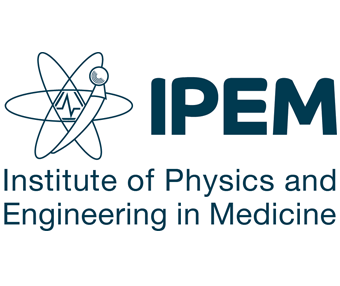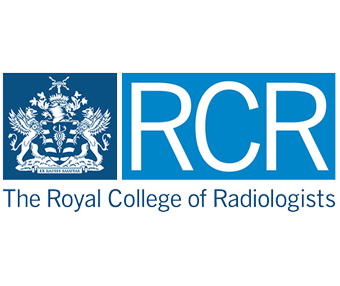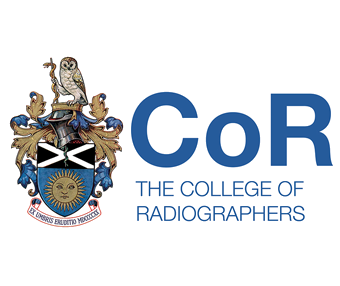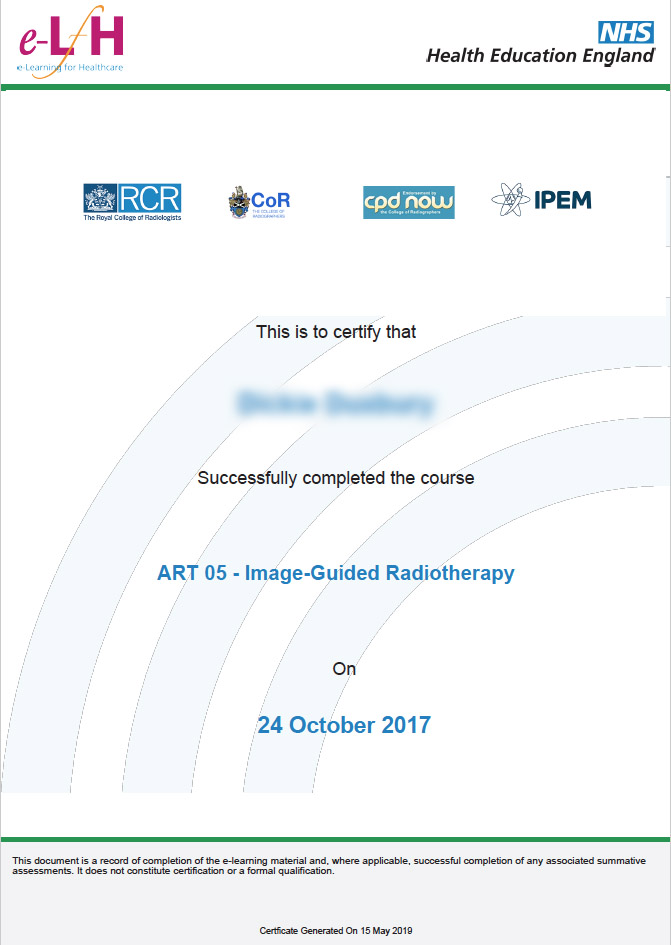Advanced Radiotherapy
Radiotherap-e covers the knowledge and practical skills required to implement advanced radiotherapy techniques safely and efficiently. It is suitable for fully qualified practitioners, including clinical oncologists, physicists, radiographers and dosimetrists, around the world.
Training in the latest radiotherapy techniques
Accessible online, the programme is packed with interactive features, such as animations, video clips and self-assessment exercises, to reinforce learning on the complex principles involved. Step-by-step descriptions of practical procedures are given, alongside clinical examples. You can also compare techniques, equipment and protocols.
Practise your radiotherapy skills in a virtual environment
You can practise your skills using customised tools that simulate radiotherapy techniques, such as contouring, dose calculation and optimisation.
Clinical oncology
You can also purchase a separate pathway dedicated to clinical oncology. See the course content and buy it now sections below for details.
Radiotherap-e has been produced in the UK by The Royal College of Radiologists, the Institute of Physics and Engineering in Medicine, the College of Radiographers and NHS England elearning for healthcare.
This online radiotherapy course is formally recognised and endorsed for continuing professional development by the UK College of Radiographers, one of the leading professional bodies in this field.
Watch the short course film
View transcript Hello, my name is Li T Tan and I would like to welcome you to this section on the eIntegrity website which gives you details about radiotherapy.
The elearning program offering comprehensive training on the practice of advanced radiotherapy techniques.
The program was developed by the Royal College of Radiologists, the Institute of Physics and Engineering in Medicine, and the Society and College of Radiographers, and offers more than 60 learning sessions.
You can learn at your own pace, and the program includes formative assessments with feedback so that you can test your understanding of the content as you progress through the course.
Do take a look at the information available on the eIntegrity website, especially our practical radiotherapy planning tools.
There are also details on how you can register for the program.
I really hope that you will join the many hundreds of healthcare professionals who have already signed up.
Course Content
Radiotherap-e features five core modules that are grouped by subject theme.
You can download the full course curriculum or take a look at the course overview below.
Module 1 – Image-Guided Brachytherapy (IGBT) for Cervix Cancer
- Fundamentals
- IGBT Cervix Terms and Definitions
- Techniques and Equipment
- Dose Targets and Organs at Risk Constraints
- Dose Prescription
- Commissioning IGBT Cervix
- Contouring
- MRI-based Contouring of High-risk Clinical Target Volume (CTV)
- CT-based Contouring of High-risk CTV
- Contouring Organs at Risk Using CT and MRI
- CT-Magnetic Resonance Fusion for Contouring
- Dosimetry
- Applicator Reconstruction
- Methods of Dose Optimisation
- Dose Optimisation – Tandem-ring
- Dose Optimisation – Interstitial Needles
- Plan Evaluation and Dose Modification
- Patient Care
- Logistics
- Role of the Advanced Practitioner
- Feminine Aftercare
Module 2 – Intensity Modulated Radiotherapy (IMRT)
- Fundamentals
- Introduction to IMRT
- Target Volume Definition
- Introduction to Objective Functions
- Gamma Index for Clinicians
- Gamma Index for Physicists
- Dosimetry
- Mathematics of Optimisation
- Forward Planned IMRT
- Inverse Planned IMRT
- IMRT Reporting and Prescribing
- Practical Aspects of IMRT Quality Assurance
- Tumour Sites
- Breast Contouring
- Breast IMRT
- Paediatric Cranio-spinal Radiation Therapy
- Pelvic and Para-aortic Nodes
- Prostate Contouring
- Head and Neck Contouring
Module 3 – Stereotactic Radiotherapy (SRT)
- Fundamentals
- Introduction to SRT
- Fiducial Systems for Brain Radiation Therapy
- Small Field Dosimetry for SRT
- Imaging for SRT
- Image Segmentation for SRT
- Brain
- Clinical Indications for Brain SRT
- Immobilisation Systems for Brain SRT
- Treatment Process for Brain SRT
- Linac Preparation, Plan Checking and Treatment Process for Cranial Stereotactic Radiosurgery and SRT
- Body
- Clinical Rationale and Contouring for Lung SRT
- Immobilisation Systems for Body RT
- Treatment Planning for Lung SRT
Module 4 – Prostate Brachytherapy
- Introduction
- Imaging Modalities and Volume Definition
- Implantation Technique
- Low Dynamic Range Planning
- High Dynamic Range Planning – Catheter Reconstruction
- High Dynamic Range Planning: Plan Optimisation and Evaluation
- Logistics
- Commissioning and Quality Assurance
Module 5 – Image-Guided Radiotherapy (IGRT)
- Fundamentals
- Fundamentals of IGRT
- Imaging Techniques and Technologies
- Image Quality and Optimisation
- Geometric Error and Impact
- Reducing Geometric Errors
- Tumour sites
- IGRT for Head and Neck
- IGRT for Lung
- IGRT for Prostate and Bladder Cancers
Proton Beam Therapy
- Introduction to Proton Beam
- Indications and Evidence for Proton Beam Therapy
- Characteristics of Clinical Proton Beams
- Treatment Planning and Delivery for Active Pencil Beam Scanning
- Radiation Protection for Proton Beams
- Patient Pathway in PBT Pencil Beam Scanning
- Acute and Late Effects of Proton Treatments
Clinical Oncology
This separate pathway features around 100 dedicated oncology sessions handpicked from our Radiology (R-ITI) programme. This pathway is suitable for all healthcare professionals working in oncology. It can be purchased as an individual module (see the ‘buy it now’ section below for details) or as part of the full R-ITI programme.
Module 1b – Thoracic and Respiratory
- Airway Anatomy
- CT Anatomy: Lobes, Segments and Airways
- CT Anatomy: Pulmonary Lobule and Fissures
- Staging of Lung Cancer
- Imaging of Lung Cancer
- Thoracic Lymphoma
- Diagnosis of Pulmonary Embolism
- Guidelines for the Management of Suspected Acute Pulmonary Embolism
- Malignant Mesothelioma
- Anterior Mediastinal Masses
- Mediastinal Masses: Middle and Posterior Mediastinum
- Causes of Mediastinal Nodal Disease
- Superior Vena Cava Obstruction: CT Imaging Findings of Pathology and Anatomy
Module 1c – Vascular and Interventional
- Superior Vena Cava Obstruction: Imaging and Treatment
- Venous Interventions in the Liver: TIPS and Budd-Chiari Syndrome
Module 2 – Musculoskeletal and Trauma
For a full list of all the modules and sessions for our programmes, please go to: http://portal.eintegrity.org/catalogue








